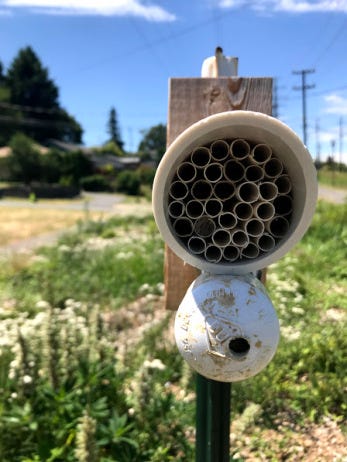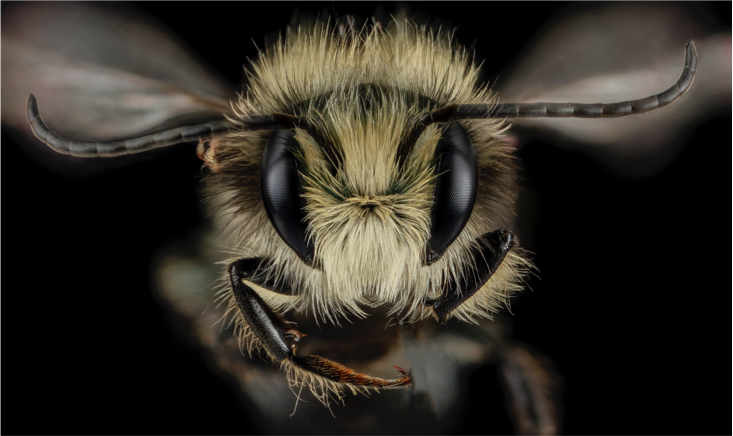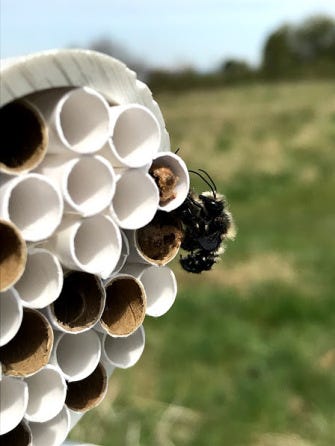Elevating Native Bee Science: My PhD Journey Explained
Written on
Chapter 1: Understanding the Elevator Pitch
In the realm of scientific communication, we often hear about the importance of an "elevator pitch." This brief presentation, typically lasting less than three minutes, succinctly conveys your work and its significance. An effective elevator pitch is straightforward, devoid of jargon, and comprehensible to everyone, from a Nobel Prize winner to your local bartender. I’m launching a series titled “My Elevator Pitch for Native Bee Science” to distill my research into digestible segments. This initiative not only allows me to practice explaining my work to the public but also highlights the excitement surrounding my research project. I hope you find this journey enlightening!

Chapter 2: The Landscape of Pollinator Research
For many years, studies on pollinator ecology have largely focused on assessing diversity. Researchers venture into the field equipped with nets, collection jars, and notebooks to capture any buzzing insects they encounter. These specimens are then preserved and identified, which requires extensive skill and knowledge. The primary aim of these labor-intensive surveys is to catalog the various insect species inhabiting a specific region. By repeating these surveys annually, scientists can monitor shifts in populations linked to climate change, habitat alterations, or human encroachment.
This method is effective, but it demands considerable effort, and mastering insect identification is a significant undertaking. The insights gained, however, are invaluable, revealing the diversity and abundance of pollinators across different environments.
Four years ago, as I began shaping my project, I opted to explore a different path than the traditional diversity assessments. My decision stemmed from the sheer labor involved and a desire to focus exclusively on a single native bee species rather than surveying all bees. I researched native bee breeders in Washington State and discovered a group that specialized in breeding Osmia lignaria, known as the Blue Orchard Mason bee, a native species found in the Pacific Northwest and the West Coast.

Chapter 3: The Allure of Mason Bees
Blue Orchard Mason bees are delightful, gentle creatures. They lack venom and do not possess stingers. As solitary bees, each female can produce offspring independently, contrasting with social species like honey bees or bumble bees. The females are robust and dark blue, often mistaken for flies due to their coloration, while the smaller males are adorned with yellow tufts.

From the moment I encountered Mason bees, I was captivated. Their friendly demeanor and distinct personalities charmed me. They hibernate in tiny brown cocoons that resemble coffee beans, entering a state known as diapause, which slows their metabolism until the environment warms. I found their behavior enchanting, sparking a deep interest in their ecological role.
Mason bees are generalist foragers, visiting a broad spectrum of flowers across various plant families. They interact with both invasive species and native plants, making them an excellent model for studying how foraging behaviors adapt as landscapes increasingly feature invasive flora.

Chapter 4: The Eclectic Ecosystem of Seattle
Seattle boasts an extraordinary variety of plant species. One could easily find both a native Douglas Fir and an Argentinean Monkey Puzzle tree within close proximity. The city's gardens are filled with flora from across the globe, with parks like the Washington Park Arboretum showcasing diverse global plant sections, often seen in local yards.
Due to this unique landscape mosaic, Seattle's green spaces exhibit significant variation. Some parks, like Magnuson Park, were developed atop former landfills and have since become overrun with invasive species, while others, such as Seward Park, preserve some of the city's oldest forests. This gradient of ecological restoration piqued my interest as I formulated my thesis.
How do bees respond to the different floral resources in Magnuson Park compared to Seward Park? Do changes in their environment influence their foraging preferences? Are there specific flowers they favor regardless of the landscape? To investigate, I designed an experiment where I would introduce bees into these parks, collect data on available plant species, and analyze the pollen they gathered once they established their nests. Utilizing my background in plant genetics, I aimed to sequence the pollen and determine the frequency of the various plants they visited, ultimately comparing their foraging success across sites.
And now, four years later, I continue my research across 24 sites in Seattle.
Lila Westreich is a researcher specializing in native solitary bees based in Seattle, Washington. You can follow her on Twitter @lilawestreich for more insights on solitary bees or visit her website at lilawestreich.com.